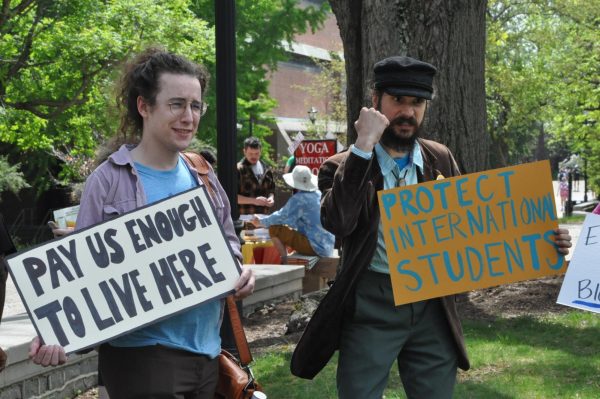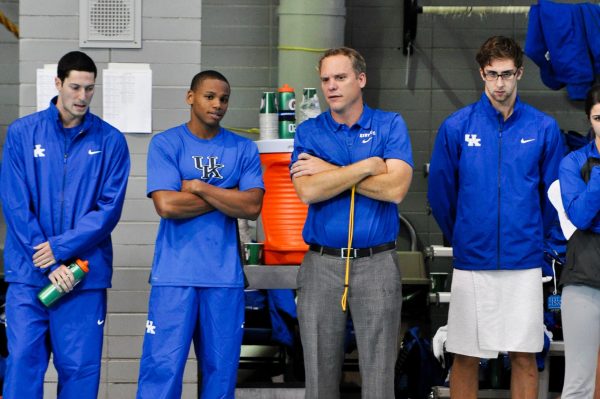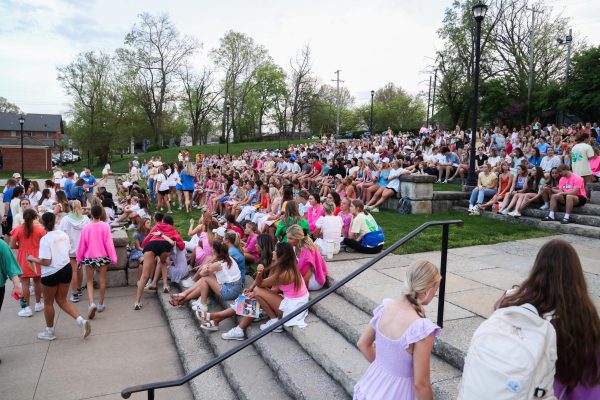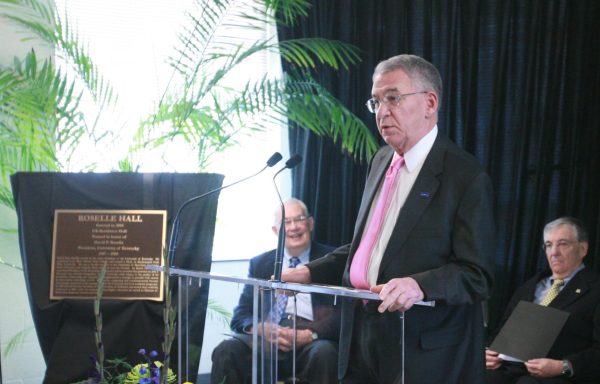Water fountains in state of repair: Goal of newer filling stations is sustainability
December 6, 2011
Two groups are teaming up to make an environmental difference on campus — starting with water fountains.
UK Facilities and the Student Sustainability Council are collaborating to make water fountains on campus be more environmentally friendly.
“The question is, where do we impact the most students, teachers and faculty?” Bob Wiseman, vice president of facilities, asked.
The initiative started in fall 2010 when the Student Sustainability Council worked for 18 months to put together a plan with UK Facilities to restore the water fountains on campus.
The sustainability council has agreed to help fund the project.
A total of 611 water fountains are on campus, the oldest being from 1964.
The most student-frequented building on campus is White Hall Classroom Building, said Shane Tedder, UK’s sustainability coordinator.
The water fountains on campus are in varying states of repair, including the brand new fountains in White Hall and the Student Center.
“A lot of schools have tried to eliminate plastic water bottles altogether and that has never worked,” Tedder said. “The
Student Sustainability Council is working to incorporate both the environment and keeping water bottles.”
Eventually, the council will pay to replace eight water fountains in White Hall that are in the worst condition, Tedder said.
The council makes their decisions to replace fountains based on their present condition. If a fountain is in the process of breaking down, it will be the first to go.
The water fountains “need to be replaced in general,” Megan Hayes, an anthropology junior, said. “I think they are too old to just be cleaned.”
Each water fountain costs $1,000 for the unit, funded by the Student Sustainability Council, and includes a water bottle filling station to incorporate environmental awareness, said Kevin Kreide, UK’s physical plant director.
White Hall, the Gatton College of Business and Economics building and the Student Center are all places where water fountains were replaced because they stopped working, Wiseman said.
“Our replacement policy has been to repair, as we can, and then replace once it is no longer economical to repair,” Wiseman said.
The 18-month initiative will end this spring, and the council hopes it will spark a permanent initiative throughout campus.
“I have seen (the new water fountains) in the majority of the buildings around campus, but I know that my dorm doesn’t have one yet,” Colin Heineke, a secondary education freshman, said. “That’s where you usually fill your water bottle up at the beginning of the day.”
While the council is funding the bottle-filling units of the water fountains, the actual water fountain is being funded by the Physical Plant.
“The water fountains will serve as a visual prompt to reduce environmental impact,” Tedder said. “We’ve gone a totally different direction.”
























































































































































